- China Travel Guide
- Things to do in China
- China Attractions
- China Travel Insights
- Chinese Food
- China Weather
- China Culture
- China Tourist Visa
Chinese Food
Essential facts for a first time western traveler to China
With origins dating back millennia, the history of Chinese food is certainly long and incredibly delicious.
Chinese cuisine is said to have originated in the central part of China, and is one of just three cuisines (French and Turkish are the other two) that profoundly influenced countries throughout East Asia. Studies of Chinese food history point to literature that indicate China was cooking barbecued meat, grilled fish, and other ‘common’ foods over 5,000 years ago.
There are many things which distinguish Chinese food: ethnic influences, regional diversity, geographic location, availability of ingredients. However, there are some general principles.
Read more
As Chinese food evolved through history, influenced greatly by natural disasters and poor harvest, the cuisine was crafted around the five flavors of Yiyin – sweet, sour, bitter, pungent, and salty – more on this below. Dishes tend to be prepared following one or a number of preparation methods. A Chinese cook – whether domestic or commercial – will know how to braise, steam, stir-fry, deep-fry, boil, or roast. Fermentation is also a feature of Chinese food, making its way into sauces, side dishes, and condiments. And of course, there is the ubiquitous presence of steamed rice at virtually every meal.
Yes, there is more to Chinese food than these fews facts, so let’s do some historical food exploration.

Yi Yin: The Culinary God of China
Over 3,500 years ago, Yi Yin was not only a politician, thinker, and minister during the Shang Dynasty, he was also a great master of cooking. Yi Yin was regarded as a philosophical chef or the Culinary God of China, on the basis of his philosophy the whole world was a kitchen. In fact, as a way to encourage the pursuit of Tang during the Shang Dynasty, he translated the “philosophy of governance” into a “mouth-watering recipe”. Essentially, this philosophy made an analogy between “the principle of cooking” and the “principles of state administration”.
In simple terms, this meant managing the country was a bit like cooking a delicious meal. Bringing together different raw ingredients, using different cooking methods, and drawing on heat control elements of good quality water, wood, and fire, it is possible to produce harmony between the five flavors of sweet, sour, bitter, pungent, and salty. Yi Yin’s theory of the harmony between five flavors of Chinese cooking endures today having pervaded other areas of Chinese life.
Read more
Just take its influence in traditional Chinese medicine wherein it is taught the harmony of five flavors not only improves the enjoyment of taste, but also helps with health by keeping balance in the body. It is even recommended for treatment of illness and injury. One fine example of how traditional Chinese medicine was influenced by Yi Yin is through the main method of taking Chinese medicine, which is drinking Chinese medicine soup. Otherwise known as Chinese medicine herbal tea made from certain plants and herbs, legend has it that Yi Yin created the “soup” method for taking medicine.

History of Chinese food: Dining through the dynasties
There is no question that Chinese people love their food. Not only are regional flavors of importance, planning, preparing, and sharing meals communally with friends and family rests at the heart of Chinese culture .
It’s hardly a surprise to learn that this appreciation of food has been around for a very long time. It seems we have much to thank the Shang Dynasty, earliest recorded in China. Aside from the significant advances made in maths, astronomy, art, and military technology, it was during Shang Dynasty rule that the five flavors of Yiyin appeared.
Further culinary evolution followed during the Zhou Dynasty, appearing as the famous – and lucky flavors – of the ‘Eight Treasures’ . Each subsequent dynasty, including the Han, Wei, Southern, and Northern dynasties, brought with it new flavors and culinary developments.
Read more
However, food historians agree that it was the Song Dynasty which represented the pinnacle of evolution in Chinese cuisine. During this period, hundreds of dishes took shape: hot and cold, soups, and dishes of great color and flavor, adding to the existing repertoire based on the predominant South, North and Sichuan flavors.
Later dynasties (Yuan, Ming and Qing dynasties) continued this seemingly unstoppable trend, with many thousands of dishes emerging. Particularly during the Qing Dynasty, until the beginning of the Republic of China when more foreigners arrived in China, Chinese food was influenced by western cuisine and a fusion of flavors was born.
After the People’s Republic of China was founded, and particularly since 1979, traditional dishes from all parts of China have re-emerged and returned to popularity. More recently, there has even been a trend to imitate the food of the Tang and Song dynasties, as well as Confuscian and Honglou dishes.
We can also organise private China tour guides who speak other foreign languages
Ask us about tour guides who speak en Français, auf Deutsch, in Nihon, and many other European and Asian languages.
Chinese food: A variety of cuisines
As a country that is expansive and diverse geographically, there is huge variability in climate, availability of ingredients, agricultural production, culture and beliefs. Consequently, regional cuisines emerged, creating the many flavors of China.
It is widely recognised there are eight major Chinese culinary traditions that are representative of different regions and flavors.
Shandong
Shandong
Region
Lower reaches of the Yellow River
Features
Fresh and salty flavors. Use of broth and stock to enhance flavors. Dishes are mainly cooked seafood (scallops, squid, sea cucumbers). Stir-fried and deep-fried.
Signature dish:
Sweet and sour carp and braised sea cucumber with scallion
Si Chuan
Si Chuan
Region
Upper reaches of the Yangtze River
Features
Wide range of ingredients, including hot and spicy Sichuan peppercorns, garlic, chili peppers, and other spices. Combines many different flavors in a dish – Locals say that each Sichuan dish has its own style and that ‘a hundred dishes have a hundred different flavors’. There are over 24 different flavors used in Sichuan food, including spicy, salty, sour, savory, bitter, and nutty. The intention with many dishes is to create a tingling or ma (麻)sensation on the lips and tongue, although other typical Sichuan flavors are: yuxiang (fish flavored); hongyou (red chili oil); suanla (hot and sour).
Signature dish: Sichuan hotpot; Yuxiang shredded pork (sauteed in spicy garlic sauce); Mapu tofu (sauteed tofu in hot and spicy sauce); Sichuan-style spicy chicken (diced chicken with spicy red chilies).
Cantonese
Cantonese
Region
Lingnan region
Features
Focus on the freshness of primary ingredients. The moderate use of spices. Stir-fried and steamed dishes. Seafood and soup are the highlights.
Signature dish: Honey roasted barbeque pork (Char siu); Cantonese white sliced chicken; yum cha for dim sum.
Min
Min
Region:
Fujian
Features
Fresh, light savory tastes. Famous for the red vinasse seasoning, stock making, use of sugar and vinegar. Dishes typically made with one method (braising, stewing, steaming or boiling). Common ingredients include seafood, river fish, shrimp, mushrooms, and bamboo shoots.
Signature dish: Buddha Jumps Over the Wall, which is a dish rich in many different ingredients, including abalone, sea cucumber, scallops, ginseng, quail eggs, chicken, ham, dried mushrooms, bamboo shoots, dried medicinal herbs – and more! Other Min specialties are oyster omelette and Fuzhou fishballs.
Su (Huaiyang)
Su (Huaiyang)
Region
Jiangsu
Features
Moderately salty, sweet and spicy. Middle to lower reaches of the Yangtze River. Fish, rice, vegetables and poultry widely used.
Signature dish: Sweet and sour spare ribs; salted dried duck.
Zhe
Zhe
Region
Zhejiang
Features
Heavily oriented towards seafood. Light flavors (not spicy). Stir fry, steamed and braised dishes.
Signature dish: Dongpo pork; West Lake fish in vinegar gravy; Beggar’s chicken.
Xiang
Xiang
Region
Hunan
Features
Hot and spicy flavors (chili, garlic, shallots). Sour flavors. Dishes are commonly simmered and stewed, fried, braised, smoked, pot-roasted.
Signature dish: Dong’an chicken; steamed fish head with chopped bell peppers; stir-fried pork belly with chili pepper.
Hui
Hui
Region
Anhui
Features
Mountain ‘peasant’ food. Strong emphasis on fungi, wild ingredients (partridges, fowls, turtles, fish). Ham is widely used as a condiment. Vegetables, herbs, game meats that are stewed, braised, and roasted.
Signature dish: Stinky mandarin fish; hairy tofu; stewed Huangshan yam with pigeon.
Want a more personal tour?
Talk to us about booking a private or custom tour.

The role of rice in Chinese food
You could be forgiven for thinking rice accompanies every Chinese meal, however it’s a false assumption depending on where you are.
Of course, there is no doubt rice is a companion to many dishes, however, those living in China’s north are more likely to consume dumplings, wheat noodles and steam buns with a meal. This is due in large part because the northern part of China is colder and drier where it is conducive to wheat production. By contrast, in China’s south, the climate is ideal for growing rice, so it is more likely your meal will be accompanied by rice or rice noodles.
Read more
At an informal Chinese meal, each individual usually is given their own bowl of rice to accompany dishes served on communal plates that are shared by everyone around the table. Apart from steamed rice, Chinese rice congee and fried rice are popular in Chinese families, while plain congee with side dishes and youtiao are typical Chinese breakfasts. Traditional fried rice is made with egg and green onions, however if you’re after something more like the dish that is known and loved in every Chinese restaurant around the world, add your own medley of ingredients.

Other interesting facts about Chinese food
So how do you eat Chinese food?
Chopsticks are the western equivalent of ‘cutlery’, used to consume all manner of solid food. Soups and other liquid foods, on the other hand, are eaten with a flat ceramic spoon.
And what about the essential elements of producing a delicious Chinese meal? Take note! As a minimum, you must carefully select and prepare the finest ingredients, bring your very best knife skills, apply the correct cooking principles with heat neither too high nor low, and use precise seasoning.
Read more
Chinese cooking methods are diverse. Depending on the dish, the chef will be called upon to stir-fry, stir, steam, boil, stew, simmer, blanch, roast, braise, sauce, pan-fry, deep-fry, bake, smoke. Given the thousands of Chinese dishes, it’s not surprising that each of these can be divided into several categories. The right application of heat is key, and each cooking method applies the heat in a different way. Take steamed pork ribs as an example. Left too long, the meat will overcook; too short and the meat will be underdone.
The order in which Chinese food is consumed is important too. Meals always start with cold dishes, then progress to hot stir-fried dishes, and large dishes (such as a whole steamed fish or roast lamb). Sweet dishes, like white fungus and lotus seeds sweet soup are the precursor to the meal ending with freshly cut fruits. Typically, savoury and light taste dishes are served first, while sweet and strong tasting dishes are served later.
And a final fun fact about Chinese food? The most popular Chinese dishes for westerners are really nothing like you get back home. When you visit China, expect to savor and enjoy all your favorites: sweet and sour pork, kung pao chicken, ma po tofu, wonton soup, dumplings (every possible kind), spring rolls, chow mein and Peking Duck (the real thing!).
Did you know?
UNESCO’s City of Gastronomy project was launched in 2004. There are thirty-six Cities of Gastronomy that have been nominated since then. China has four Cities of Gastronomy on the list which are Chengdu, Macao, Shunde and Yangzhou.
Food in main Chinese cities
Chinese Food Articles
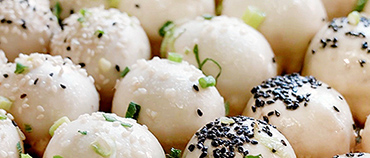




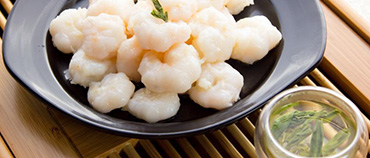
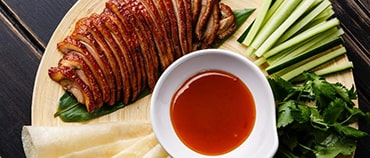









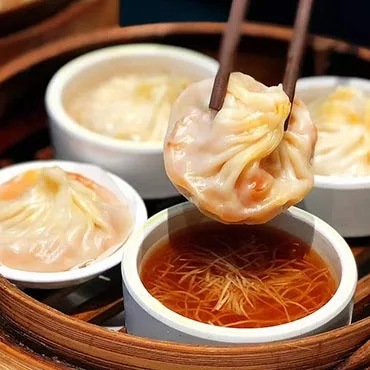





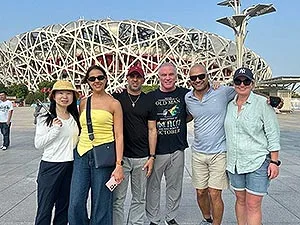


 First Time Traveller 10/10
First Time Traveller 10/10




